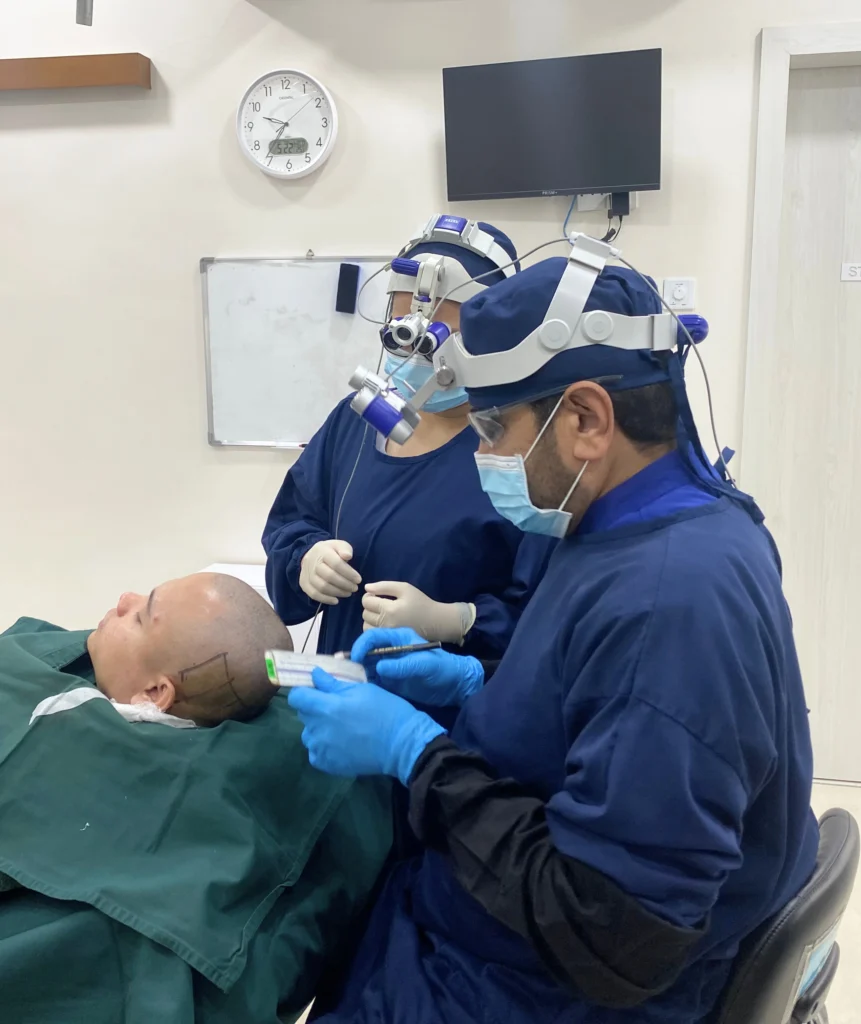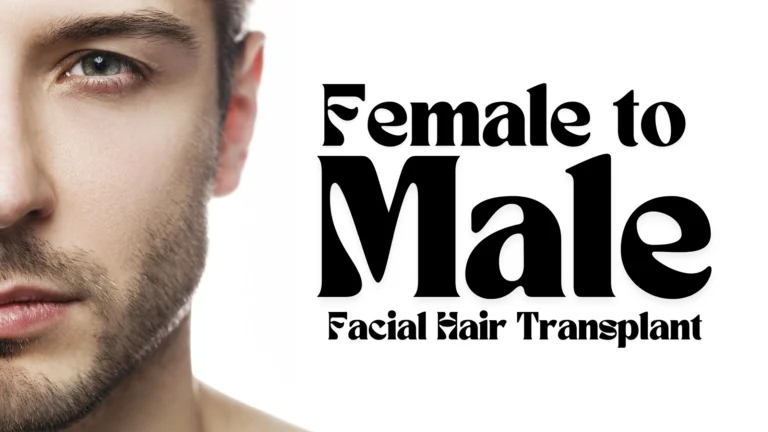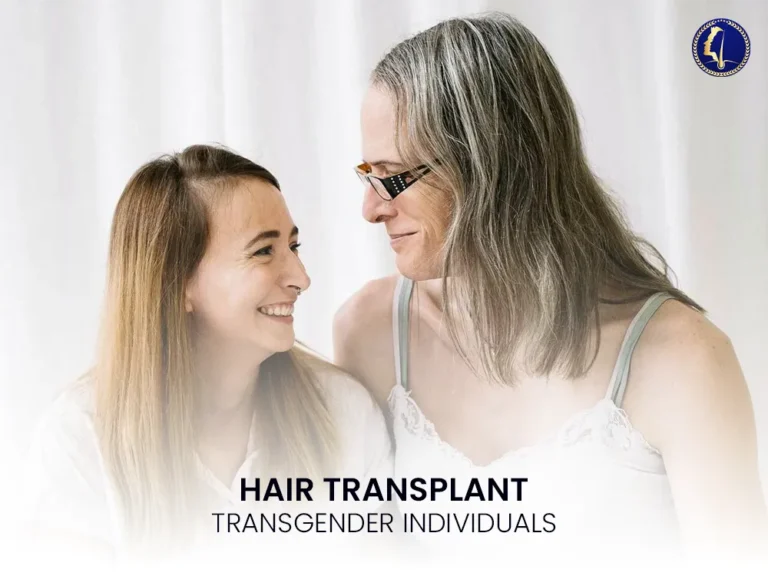Hair Transplant Transgender
Whether you’re looking for solutions to male pattern baldness or seeking to cultivate a fuller, more traditionally masculine beard, modern hair transplant techniques are designed to meet diverse needs and help you feel more at home in your own skin. Let’s explore how these advanced options can be tailored specifically for transgender patients seeking hair restoration.
Transgender Hair Transplant
Importance of Hair Transplant in Gender Transition
For many transgender individuals, hair is more than just a style; it’s a pivotal aspect of their identity and how they present themselves to the world. Hair transplants play a critical role in gender transition, offering a way to align one’s external appearance with their gender identity.
This is not only crucial for their overall appearance but significantly impacts their confidence and mental health. Transgender men might seek more masculine hairlines or the growth of facial hair, while transgender women often look for solutions to hair loss that might have occurred due to previous testosterone exposure, seeking a more typically feminine hairline restoration.
Hair Restoration Options for Transgender Patients

Transgender individuals have a variety of hair restoration options that cater specifically to their unique needs. These include:
- Scalp Hair Transplants: Where hair follicles are typically moved from the back of the scalp to balding areas to create a hairline that aligns with the individual’s gender identity.
- Facial Hair Transplants: Especially for transgender men, this process can help in cultivating a beard, mustache, or sideburns, which are significant gender markers.
- Body Hair Transplants: These might be considered by individuals looking to adjust the density or presence of hair on various body parts.
Each option is tailored to support the individual’s transition goals, working to enhance both their outward appearance and inherent sense of self.
Hair Transplant Procedure for Transgender Individuals
Process of Transgender Hair Transplant Surgery

The process of transgender hair transplant surgery generally follows a meticulous path:
- Consultation: This initial phase includes discussions about goals, expectations, and the creation of a hairline design.
- Preparation: The donor and recipient areas are prepared, often involving shaving and sterilizing.
- Extraction and Placement: Hair follicles are carefully extracted, typically from the back of the scalp, and transplanted to the desired areas.
- Recovery: Post-operative care is crucial, involving gentle cleansing and avoidance of vigorous activities to ensure optimal results.
Each step is conducted with precision to ensure that the outcomes not only look natural but also support the patient’s transition goals.
Facial Hair Restoration Surgery for Transgender Men
Facial hair transplantation is particularly transformational for transgender men. It involves transferring hair follicles to the face to cultivate a beard or mustache, which are strong male characteristics.
The process requires artistic and medical expertise to ensure that the new hair growth appears natural and complements the overall facial structure.
Hair Follicles and Growth for Transgender Women
For transgender women, addressing hair loss typically involves the restoration of a more feminine hairline and increasing overall scalp coverage.
Surgeons focus on the angles and directions of hair growth to mimic natural female hair patterns, which tend to be denser and lower on the forehead. Ensuring the right placement and density is essential for achieving a convincing and aesthetically pleasing result.
Transgender Hair Transplant Cost
Understanding the costs associated with transgender hair transplants is crucial for those considering this life-changing procedure. The expenses can vary widely depending on several factors, including the type of procedure, the surgeon’s expertise, the geographic location of the clinic, and the complexity of the patient’s needs.
Generally, the cost of a hair transplant can range from a few thousand dollars to upwards of $15,000 or more. Many clinics offer financing options to help manage these costs, making the procedure more accessible to a wider range of people.
FUE Hair Transplant in Malaysia

Malaysia has become a popular destination for various medical tourism procedures, including Follicular Unit Extraction (FUE) hair transplants. The FUE technique, which involves extracting individual hair follicles and implanting them into balding areas, is favored for its efficiency and minimal scarring.
In Malaysia, the cost of FUE hair transplants is often significantly lower than in Western countries, ranging from RM3,000 to RM15,000, depending on the number of grafts needed. Additionally, clinics in Malaysia are known for their high standards of care and the use of advanced technologies.
Surgical Hair Loss Treatment
Surgical hair loss treatments, such as FUE and Follicular Unit Transplantation (FUT), are some of the most effective methods for achieving permanent solutions to hair loss. These procedures involve transplanting hair from denser areas of the scalp, or even body hair, to the balding or thinning areas.
The success of these treatments largely depends on the skill of the surgeon and the viability of the transplanted hair follicles. It’s imperative for patients to choose a clinic and a surgeon with extensive experience in performing hair transplants for transgender individuals, to ensure a natural-looking outcome.
Female to Male

Transitioning from female to male (FTM) involves various physical changes, and many trans men seek hair restoration procedures to align more closely with their gender identity. This often includes creating a more typically masculine hairline or adding facial hair.
Transgender Patient
For transgender patients, particularly those transitioning from female to male, the approach to hair transplantation can be different from cisgender patients. Trans men may seek hair restoration not only on the scalp but also to grow facial hair, such as a beard or mustache, which are important gender-affirming attributes.
Surgeons need to consider several factors, including the density and direction of hair growth, to ensure the results are both natural-looking and affirming the patient’s gender identity. Transgender patients looking for hair transplants should seek out surgeons who are not only skilled in surgical techniques but are also sensitive to the unique needs of the transgender community.
Considerations for Hair Transplant and Gender Change Surgery
Hair transplantation can be an important part of gender transition, helping to align physical appearance more closely with gender identity. For many transgender individuals, undergoing hair transplant procedures is a step toward affirming their true selves.
Government Coverage for Gender Change Surgeries
The availability of government coverage for gender change surgeries, including hair transplants, varies widely depending on the country and even within states or provinces.
In some regions, these surgeries are covered under public health insurance plans as essential treatments for gender dysphoria, while in others, individuals might need to rely on private health insurance or pay out-of-pocket. It’s crucial to research and understand your region’s policies on transgender health care:
- Contact local transgender support groups for guidance.
- Consult with healthcare professionals who specialize in transgender medicine.
- Review insurance policy details for information on what surgeries and treatments are covered.
Hair Transplant as Part of Gender Reassignment Surgeries
Incorporating hair transplant surgery as part of gender reassignment procedures can dramatically enhance self-esteem and help individuals present as their authentic selves.
For trans-men, this might involve creating a more traditionally masculine hairline or even facial hair transplantation. For trans-women, the focus may be on filling in hairline gaps and achieving a softer, more feminine hairline. The process involves:
- Detailed consultations to discuss desired outcomes.
- Careful planning of the transplant procedure to match the individual’s unique facial structure and aesthetic goals.
- Follow-up care to ensure the health and success of the transplanted hair.
Choosing an experienced surgeon who understands the specific needs of transgender patients is essential for achieving the best results.
Conclusion and Future Possibilities
The landscape of hair restoration, especially for the transgender community, is ever-evolving. With advances in hair transplant surgeries and non-surgical options, individuals have more resources at their disposal to help achieve the look that reflects their true self. These developments not only enhance physical appearance but significantly boost self-esteem and body confidence.
Potential of Hair Transplant for Transgender Individuals
Hair transplant surgeries, including those used to create or enhance beard or hairlines, have become deeply transformative for transgender individuals. Techniques like Follicular Unit Extraction (FUE) and Follicular Unit Transplantation (FUT) are tailored to meet specific needs, taking into consideration factors like facial structure and desired hair density. Future advancements will likely refine these techniques, making them even more effective and accessible.
Non-Surgical Hair Loss Treatments for Transgender Community
Aside from surgical options, there are several non-surgical treatments that have shown promise in managing hair loss and promoting hair growth. These include:
- Minoxidil (Rogaine): Applied topically to stimulate hair follicle activity and hair growth.
- Finasteride (Propecia): A prescription pill that slows hair loss by blocking the formation of hormone DHT, which is implicated in hair loss.
- Platelet-rich plasma (PRPR) injections: Using a concentration of a patient’s own platelets to accelerate the healing of injured tendons, ligaments, muscles, and joints; in the context of hair, it promotes hair growth by stimulating hair follicles.
As the field of hair loss treatment continues to advance, these options provide meaningful alternatives for those who may prefer not to undergo surgery.

